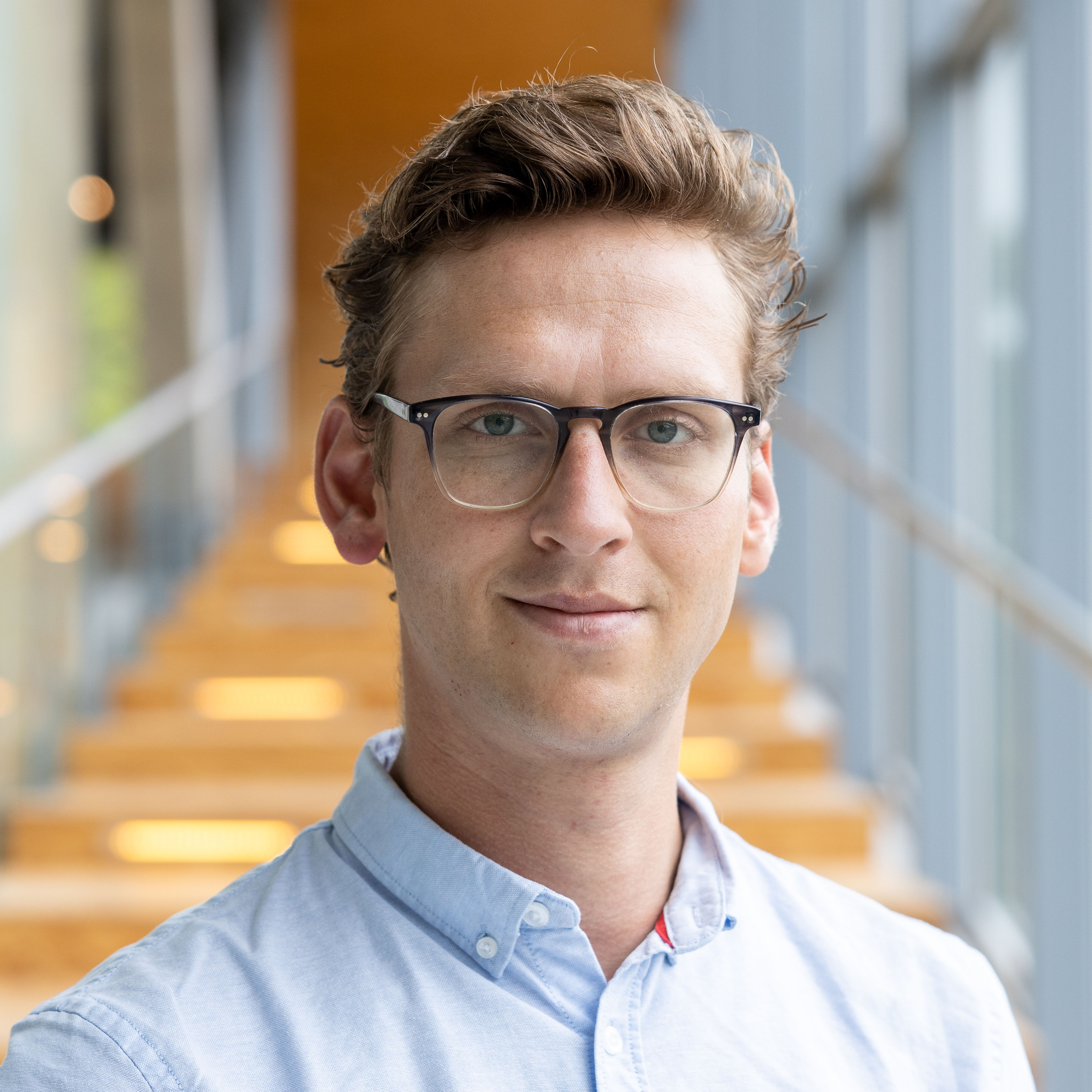Dr. Ward van der Stam | Utrecht University
Probing the dynamics of CO2 electrolysis with X-ray and Raman scattering
Electrocatalytic conversion of carbon dioxide into sustainable fuels and base chemicals requires precise control and understanding of activity, selectivity and stability descriptors. Identification of the active phase under working conditions, but also deactivation after prolonged operation, are of the utmost importance to further improve electrocatalysts for electrochemical CO2 conversion. Here, we present a multiscale in situ investigation of activation and deactivation pathways of oxide-derived copper electrocatalysts under CO2 reduction conditions. Using well-defined Cu2O octahedra, in situ X-ray experiments tracked morphological changes at small scattering angles and phase transformations at wide angles, with millisecond time resolution and ensemble-scale statistics. They showed rapid initial activation within the first minute after cathodic bias onset, whereas deactivation over the next hour is correlated with surface roughening. Time-resolved in situ Raman experiments on the same reaction revealed the surface-adsorbed molecules during activation and deactivation. Within a minute, the transformation of Cu2O into metallic Cu was followed by the activation of the catalyst surface, as evidenced by the appearance of surface-adsorbed carbon monoxide (CO*). Prolonged operation revealed additional adsorbed species, accompanied by a drop in carbon-containing products over the course of half an hour. This study elucidates the dynamic and intimate relationship between electrocatalyst structure, surface-adsorbed molecules, and catalytic performance during CO2 reduction.
Biography
Dr. Ward van der Stam is an assistant professor at Utrecht University, where his main focus lies on in-situ characterization of electrocatalysts under reaction conditions. He obtained his PhD degree in 2016, and the PhD research focused on the development of colloidal synthesis strategies toward well-defined nanoparticles of various compositions, with a strong emphasis on the use of earth-abundant materials, like copper. Furthermore, he acquired expertise regarding self-assembly of nanoparticles, the development of cation exchange and doping reactions, and in-situ X-ray techniques. Thereafter, he was a postdoctoral researcher at Delft University of Technology, where he worked with in-situ (spectro)electrochemical methods and ultrafast spectroscopy techniques to eludicate the influence of electrochemical doping on the structural and optical properties of colloidal nanomaterials. Currently, his research at Utrecht University combines the acquired expertise in colloidal nanoparticle synthesis strategies, electrochemistry and in-situ spectroscopy (e.g. Raman spectroscopy) and X-ray techniques (e.g. X-ray diffraction and absorption) to access and understand novel reaction pathways in the electrocatalytic conversion of CO2 into value-added chemicals and fuels. Furthermore, he likes to share his passion for sustainability research and what chemistry can do to mitigate CO2 emissions with the next generation of scientists through knowledge dissemination events and teaching.
